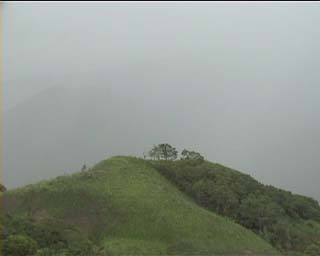

h|u|m|b|o|t
[about]
[+] next
[-] previous
[f] found entries
[w] word entries
[V] unfold
[x] close
| [x] |
When a traveler recently arrived from Europe steps into South American jungle for the first time he sees nature in a completely unexpected guise. The objects that surround him only faintly bring to mind those descriptions by famous writers of the banks of the Mississippi, of Florida and of other temperate regions of the New World. With each step he feels not at the frontiers of the torrid zone but in its midst; not on one of the West Indian Islands but in a vast continent where everything is gigantic; mountains, rivers and the masses of plants. If he is able to feel the beauty of landscape, he will find it hard to analyse his many impressions. He does not know what shocks him more: whether the calm silence of the solitude, or the beauty of the diverse, contrasting objects, or that fullness and freshness of plant life in the Tropics. It could be said that the earth, overloaded with plants, does not have sufficient space to develop. Everywhere tree trunks are hidden behind a thick green carpet. If you carefully transplanted all the orchids, all the epiphytes that grow on one single American fig tree (Ficus gigantea) you would manage to cover an enormous amount of ground. The same lianas that trail along the ground climb up to the tree-tops, swinging from one tree to another 100 feet up in the air. As these parasitical plants form a real tangle, a botanist often confuses flowers, fruit and leaves belonging to different species. |
| [x] |
While Bonpland worked day and night dividing our herbal collections, thousands of obstacles prevented our departure from Havana. No ship would take us to Porto Bello or Cartagena. People seemed to enjoy exaggerating the difficulties faced crossing the isthmus and the time it takes to go by ship from Guayaquil to Lima. They reproached me for not continuing to explore those vast rich Spanish American lands that for over fifty years had not been open to any foreign travelers. Finding no boat I had to hire a Catalonian sloop anchored at Batabanò to take me to Porto Bello or Cartagena, depending on how the Santa Marta gales might blow. The prosperity of Havana, and its mercantile links with pacific ports, allowed me to procure funds for several years. I was able to exchange my revenues in Prussia for a part of General Don Gonzalo O'Farrill's: who was Minister to the Spanish Court in Prussia. On the 6th of March the sloop I had hired was ready to sail. |
| [x] |
Travelers know by experience that views from the summits of high mountains are neither as beautiful, picturesque, nor as varied as those from the heights of Vesuvius, Righi or the Poy-de-Dôme. Colossal mountains such as Chimborazo, Antisana or Monte Rosa compose such a huge mass that the richly cultivated plains are seen only at a great distance where a bluish and watery tint spreads over the landscape. The Tenerife peak, due to its narrow shape and local position, combines the advantages of the less high summits with those of the very high. From its top we can see not only the sea to the horizon, but also the forests of Tenerife and the inhabited coastal strips, which seem so close that their shapes and tones stand out in beautiful contrasts. It could be said that the volcano crushes the little island that serves as its base, and that it shoots up from the depths of the seas to a height three times higher than cloud level in summer. |
| [x] |
Despite their authority the missionaries could not persuade the Indians to go any further on into the cavern. The lower the vault the more piercing the screaming of the guàcharos became. Thanks to the cowardice of our guides we had to retreat. We found that a bishop of Saint Thomas of Guiana had gone further than us. He had measured 2, feet from the mouth to where he stopped, but the cavern went further. The memory of this feat was preserved in the Caripe convent, without precise dates. The bishop had used torches made from white Castile wax, while we had torches made of tree bark and resin. The thick smoke from our torches in the narrow underground passage hurt our eyes and made breathing difficult. |
| [x] |
We continued to climb from this pine to the crater of the volcano without crossing one valley, for the ravines do not merit this name. To the eyes of a geologist the whole of the island is one mountain whose oval base is prolonged to the north-east and in which several systems of volcanic rock, formed in different periods, may be distinguished. |
| [x] |
April 15th. At dawn we passed the Anaveni river, a tributary river that comes down from mountains in the east. The heat was so excessive that we stayed for a long time in a shaded place, fishing, but we could not carry off all the fish we hooked. Much later we reached the foot of the Great Cataract in a bay, and took the difficult path - it was night by then - to the Atures mission, a league away. We found this mission in a deplorable state. At the time of Solano's boundary expedition (101) it contained 320 Indians. Today it has only forty-seven. When it was founded Atures, Maypures, Meyepures, Abanis and Uirupas tribes lived there, but now there were only Guahibos and a few families from the Macos left. The Atures have completely disappeared; the little known about them comes from burial caves in Ataruipe. |

